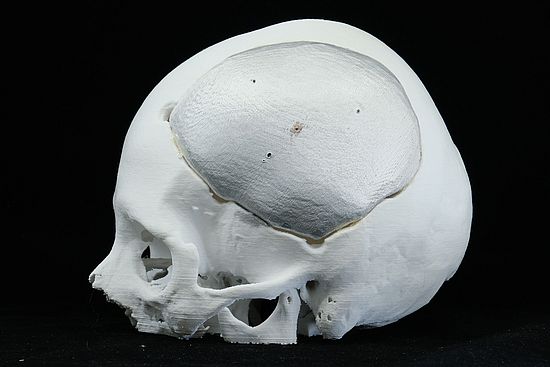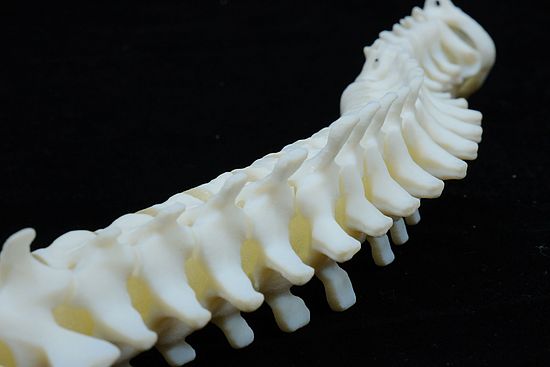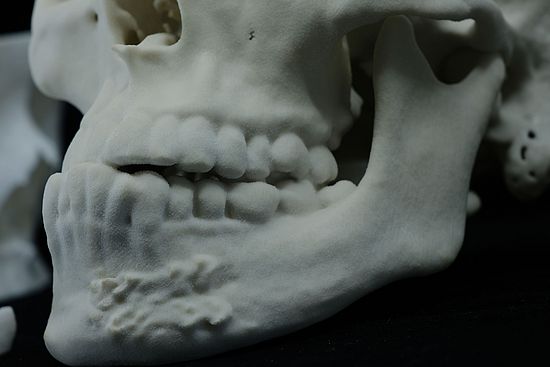Elastic (Silicon-like) Resin Material Details

General Informations
Elastic50A Resin, tailored for Stereolithography 3D printing (SLA), offers a unique blend of features that are particularly appealing to researchers, medical professionals, and point-of-care printing enthusiasts. This resin begins as a liquid material and solidifies through a UV laser-induced polymerization process. Components crafted with SLA technology boast an exceptionally smooth surface finish and remarkable precision. Elastic50A Resin has been meticulously designed to replicate the qualities of silicone, making it an invaluable resource in various applications.
Softness and Flexibility Elastic50A Resin distinguishes itself with its remarkable softness and flexibility. While it aims to mimic silicone, it's important to note that its properties are not identical due to the UV curing process. This material lacks meltability and exhibits a degree of brittleness compared to vulcanized silicone.
Ideal for Immersive Environments One significant advantage of SLA-printed components is their inherent density and resistance to water, rendering them ideal candidates for applications involving submersion and water flow assessments. Moreover, the exceptional surface quality makes Elastic50A Resin exceptionally suitable for deployment in wind tunnel testing and flow analysis scenarios.
Weather Considerations SLA-produced parts are generally not designed for prolonged exposure to adverse weather conditions or UV radiation and are typically reserved for prototyping purposes. Therefore, it is advisable to employ components crafted from Elastic50A Resin in protected environments.
Support Structures In SLA 3D printing, support structures are composed of the same material as the print itself, necessitating manual removal. This characteristic, while common in SLA technology, may impose certain limitations on design freedom when compared to alternative manufacturing methods.
Printing in Silicon-like Resin
Minimum Wall: 0.6 mm
Smalest Detail: 0.1 mm
Layer hight: 0.05 mm
Max Print size:145 × 145 × 185 mm
Tollerance: 0.2% min ±0.15 mm
Delivery Times: Typicaly 5-8 Businessdays

Pro`s and Con`s
Pro:
- Exceptionally Smooth Surface: Elastic50A Resin yields components with an exceptionally smooth surface finish, making it perfect for applications where aesthetics and precision are paramount.
- High Precision: This resin offers outstanding dimensional accuracy and enables the reproduction of intricate designs with remarkable precision.
- Fine Detailing Possible: With Elastic50A Resin, the creation of minute and intricate details in your 3D prints becomes achievable.
- High Flexibility: Its remarkable flexibility allows for the production of parts that mimic the pliability of soft tissue.
- Softness and Realism: Elastic50A Resin has a softness that simulates the feel of organic materials, adding a layer of realism to models and prototypes.
Con:
- Limited UV Resistance: Elastic50A Resin lacks significant resistance to UV radiation, which can lead to degradation over time when exposed to sunlight or UV sources.
- Not Weather-Resistant: It is generally unsuitable for outdoor or weather-exposed applications due to its susceptibility to environmental factors.
- Manual Support Removal: Similar to other SLA-based materials, Elastic50A Resin requires the manual removal of support structures, which can be time-consuming.
- Limited Longevity: Elastic50A Resin may exhibit signs of accelerated aging over prolonged periods of use, making it less suitable for applications requiring long-term durability.
- Susceptibility to Fractures: The material is prone to developing small cracks or fractures under certain conditions, so careful handling is essential.
Applications of Silicon-like 3D Print



Applications of Elastic50A Resin
Elastic50A Resin finds a multitude of compelling applications, with a particular highlight being its utility in soft tissue simulation for surgical training. This versatile material can also excel in:
- Creation of anatomical models for medical education
- Prototyping of customized medical devices
- Production of flexible, haptic prototypes for tactile evaluation
- Design and fabrication of wearable healthcare solutions
- Crafting intricate and small-scale components for research purposes
The remarkable precision and flexible nature of Elastic50A Resin lend themselves to applications where mimicking the characteristics of soft tissue is critical. Researchers, medical practitioners, and point-of-care enthusiasts will find this material a valuable asset in their pursuit of innovative solutions.
Technical specifications
Mechanical and Thermal Properties
Property | Test Method | Value |
Tensile Strength | ASTM D 638-10 | 8.9 MPa |
Stress at 100% Elongation | ASTM D 412-06 (A) | 6.3 MPa |
Bruchdehnung | ASTM D 638-10 | 120% |
Shore Hardness | ASTM 2240 | 80A |
Compression Set (23°C for 22 hours) | ASTM D 624-00 | 3% |
Ross Flex Fatigue at 23°C (notched, 60° bending, 100 cycles/minute) | ASTM D1052 | >200,000 cycles |
Glass Transition Temperature (Tg) | DMA | 27°C |
Solvent Compatibility:
Solvent | 24 hr weight gain (%) |
Acetic Acid, 5% | 0.9 |
Acetone | 37.4 |
Isopropyl Alcohol | 11.7 |
Bleach, ~5% NaOCl | 0.6 |
Butyl Acetate | 51.6 |
Diesel | 2.3 |
Diethyl Glycol Monomethyl Ether | 19.3 |
Hydraulic Oil | 1.0 |
Skydrol 5 | 10.7 |
Hydrogen Peroxide (3%) | 0.7 |
Isooctane | 1.6 |
Mineral Oil, light | 0.1 |
Mineral Oil, heavy | < 0.1 |
Salt Water (3.5% NaCl) | 0.5 |
Sodium Hydroxide (0.025%, pH=10) | 0.6 |
Water | 0.7 |
Xylene | 64.1 |
Strong Acid (HCl Conc) | 28.6 |



